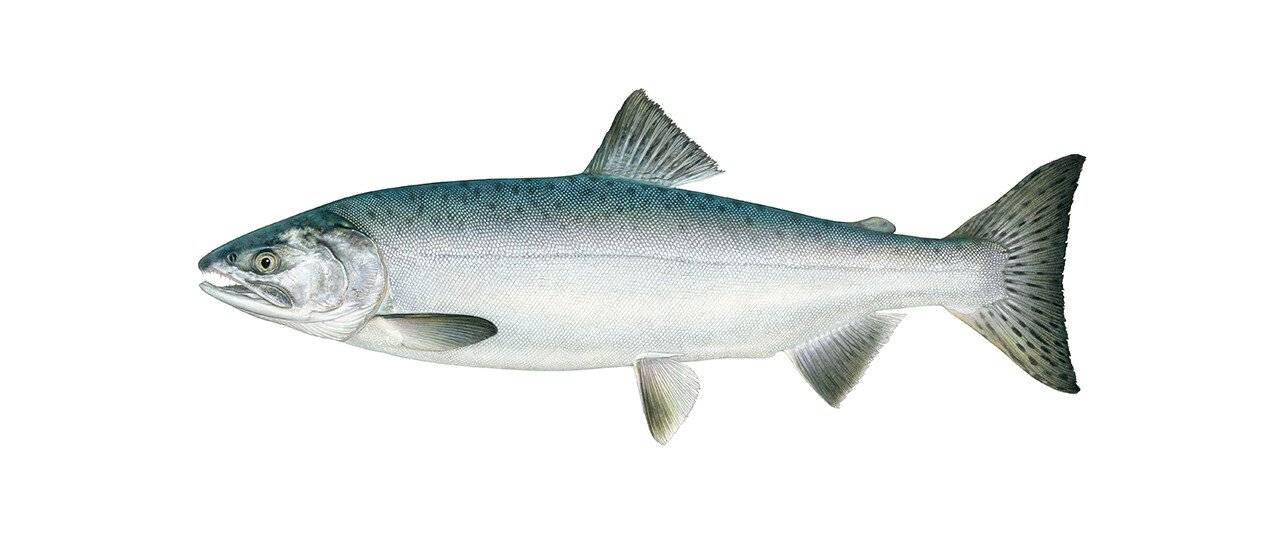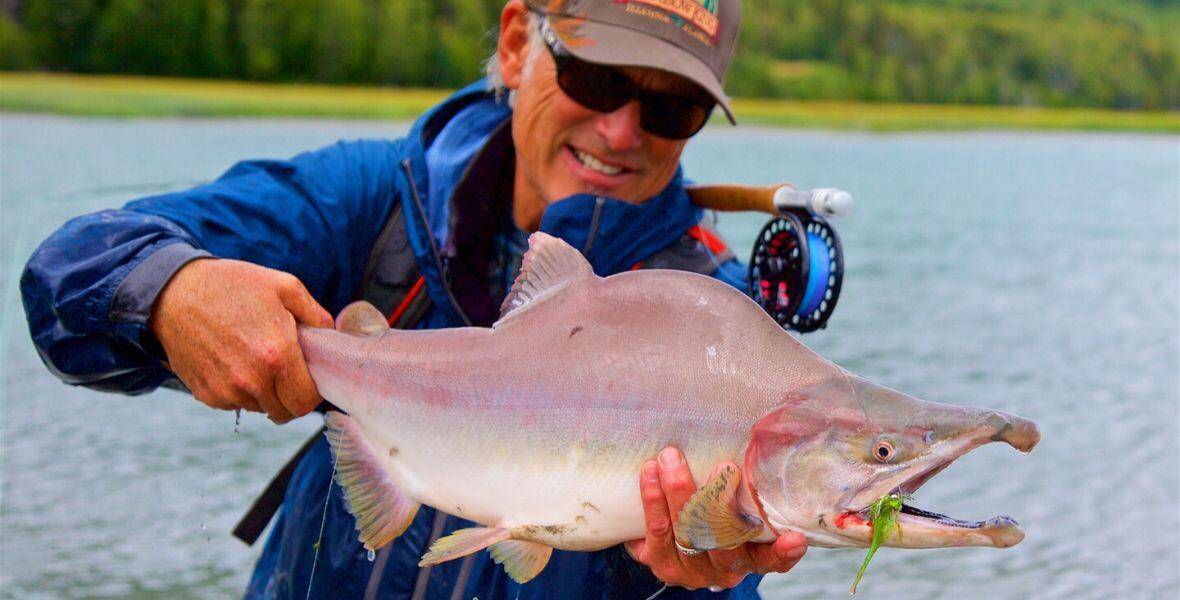Pink Salmon Fishing In Alaska
Not a targeted salmon at Rainbow King, but no one complains after a fight with a big Pink Salmon on a fly rod. The Alaskan pink salmon, also known as the humpback salmon, maybe the smallest variety of Pacific salmon. However, anyone who has fished for these little fighters knows that just because they’re the smallest doesn’t mean they go down without a fight. When fly-fishing for pink salmon with a six-weight fly rod, you’ll get more than enough fight for your money making them a good day’s fishing even if they’re not the fish you intended to catch. There’s no better place in Alaska to experience pink salmon fishing than Rainbow King Lodge, where you can be up to your ears in these pint-sized powerhouses while being surrounded by some of the most beautiful vistas you’ll ever see.
Pink salmon are also known as humpback salmon, thanks to the enlarged humps the males develop in freshwater. They average between 3 and 5 pounds. Because of their size and the fact that they can be found in areas where larger fish congregate, they’re considered a by-catch. Yet even though pink salmon are rarely the main attraction, they’re still a lot of fun to catch. Their aggressive nature and nonstop action mean you can count on a real battle every time you hook one.
Pink salmon make their grand arrival in the Alaskan waters in mid-July and August. Their migration is heaviest every seven years. Rainbow King Lodge gives you the best possible backdrop for fishing pink salmon, with our extensive, exclusive fishing areas. Our prime location is along the shores of Lake Iliamna, the largest lake in Alaska. There’s simply no better place to catch a wide variety of trout and other types of trophy fish — including pink salmon — than Rainbow King Lodge.
Book Your Stay With Us
Whether pink salmon is on your Alaska fishing trip wish list or just a happy by-product of your hunt for something bigger, Rainbow King Lodge gives you the opportunity to catch them in the best possible circumstances. You’ll not only come home with fish you can’t find anywhere else in the world, but you’ll also come home with memories of a fishing excursion that will last a lifetime. If you’re ready to book your dream Alaska fishing trip at Rainbow King Lodge, contact us today to get started.

